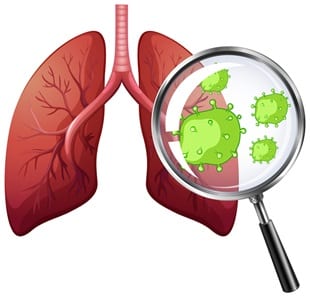Home
Conditions
Severe pneumonia is the most common cause of infected fluid accumulating in the pleural space between the lung and the chest wall. If the empyema is diagnosed promptly, the fluid can easily be removed using a chest drain or keyhole surgery (thoracoscopy).
Later diagnosis may mean that the body has produced scar tissue around the lung, preventing it from inflating fully. Patients are typically very short of breath, with a high fever and feel very sick. In such cases treatment will involve a larger operation (thoracotomy) to remove this ‘pleural peel’ tissue as well as the fluid.
A chest empyema is a medical condition in which pus or infected fluid accumulates in the space between the lung and the chest wall, known as the pleural space. This often results from a bacterial infection, such as pneumonia, or a lung injury, such as a ruptured abscess. Chest empyema can cause symptoms such as chest pain, fever, and shortness of breath. Treatment typically involves draining the fluid and administering antibiotics.

Empyema in the lungs can be caused by a bacterial or fungal infection, often resulting from pneumonia, tuberculosis, or lung abscess. It occurs when pus accumulates in the pleural cavity, the space between the lung and the chest wall. Other risk factors for empyema include a weakened immune system, recent chest surgery, or trauma to the chest. Treatment usually involves antibiotics, chest drainage, and sometimes surgery to remove the infected tissue.
Empyema can be life-threatening if it is not treated promptly. Empyema is a condition where pus builds up in the pleural space, which is the area between the lungs and the chest wall. This can occur due to a bacterial infection such as pneumonia, tuberculosis, or lung abscess. If empyema is not treated, it can lead to serious complications such as sepsis, respiratory failure, and even death. It is important to seek medical attention immediately if you suspect you may have empyema.
The three stages of empyema are:
1. Exudative phase: In this stage, fluid accumulates in the pleural space and the pleural membranes become inflamed. This fluid can be clear, yellow, or blood-tinged.
2. Fibrinopurulent phase: In this stage, the fluid becomes thick and pus-like as a result of the accumulation of inflammatory cells, fibrin, and dead tissue. Draining the fluid at this point can be difficult, and antibiotics are typically used to treat the infection.
3. Organizing phase: In this stage, the body’s natural healing process takes over, and the thickened fluid becomes more solid and fibrous. This can make it even more difficult to drain the fluid, and surgery may be needed to remove the affected tissue and promote proper healing.
Empyema is a condition where pus collects in the pleural space, which is the space between the lungs and the chest wall. The treatment of empyema involves drainage of the pus via a chest tube and the administration of antibiotics to control the infection.
The choice of antibiotics depends on the type of bacteria causing the infection. Broad-spectrum antibiotics such as amoxicillin-clavulanate, ceftriaxone, and levofloxacin are usually started empirically. Once the lab results become available, the antibiotics can be adjusted depending on the sensitivities of the bacteria. Treatment typically lasts 4-6 weeks to ensure complete resolution of the infection.
With unparalleled expertise in thoracic surgery and a patient-centered approach, Marco Scarci delivers exceptional care tailored to each individual. Patients consistently praise his compassionate care, clear communication, and successful outcomes, making him a trusted choice for lung cancer and thoracic treatments. Your health and satisfaction are his priority.
Severe chest infection Treatment, Severe chest infection Treatment, Severe chest infection Treatment, Severe chest infection Treatment, Severe chest infection Treatment, Severe chest infection Treatment, Severe chest infection Treatment, Severe chest infection Treatment